How Climate Change Is Transforming Lake Michigan
A new report by U.S. Geological Survey tracks changes in Great Lakes.
New climate projections suggest increases in maximum and minimum daily temperatures in the Lake Michigan basin by as much as 8 degrees by 2099.
With temperatures rising, annual water flow from precipitation and runoff is expected to increase during winter and decrease in spring, especially in northern Michigan and Wisconsin.
A recent report by the U.S. Geological Survey (USGS) is intended to help land managers cope with the seasonal changes resulting from climate change in the lake basin.
Those seasonal changes include the impact of low flow on wetlands and sensitive fish and invertebrate populations, researchers said.
The report focuses on the Lake Michigan watershed – every lake, river and tributary that drains into it.
The USGS modeled the entire basin and proposed similar climate-based projections in the Lake Superior and Lake Erie watersheds.
“The model is intended to provide data that managers can use now and in the future to restore lakes to their pre-industrial state, to get things back to normal,” said Daniel Christiansen, a USGS scientist based in Iowa City, Iowa and the lead author of report.
It takes daily weather inputs – rain, snow and air temperature – to determine how water is stored and how it moves across the landscape on a monthly and annual basis.
These models aren’t new. Scientists have used them to make flood estimates and to regulate water flow into dams, said Christiansen.
The report uses streamflow measurements collected by the National Phenology Network, a group of professionals and citizen scientists who collect and share environmental data.
The Phenology Network has already released data verifying the shifts in seasonal climate conditions, especially later in spring, said John Walker, who coauthored the report.
“It’s remarkable the amount of data we get from people,” he said.
“We have a network of stream gauges, some with a signpost and tick-marks to catch the water level and a phone number to report it.”
Hundreds of thousands of these observations were analyzed for the report.
They come from 148 USGS gauges and 157 National Weather Service climate stations, which provide the technical readings on streamflow, water lost to the atmosphere and solar radiation.
The report used radiation from the sun as the main driver for water movement in the basin.
Whether it’s rising temperatures, rising water levels or an extended growing season, the sun’s energy controls the availability of water in any system.
And with monthly flow over the course of a year expected to increase, scientists continue measuring how water moves – if it’s released as rain or locked in snow.
The winter snowpack, which normally remains frozen, can melt as a result of higher temperatures and rain. This not only raises concern about flooding but also lowers the amount of water available in spring.
To track these changes, the model splits data into periods of low and high flow, said Walker.
Streamflow measures the amount of water moving across the basin at any instant.
Low flows represent the lowest 10 percent of water levels, where “it’s been low enough for fish species and invertebrates to see distress,” he said.
Current conditions rely on when the snow melts and how much snow melts to recharge water systems and soil. But the model predicts lower spring flows and drier soils in the decades to come.
It also suggests a lengthening in the growing season.
If the beginning of the growing season shifts earlier and the end shifts later, as the report suggests, plants can bloom before insects are able to pollinate them and can grow late into the season, affecting seasonal food availability, reproductive cycles and the migration of wildlife.
As the season extends, the ecosystem within the basin must respond. If the ecosystem cannot adapt, sensitive environments and species will suffer, according to the report.
“Ecosystems evolved to correspond to different triggers, so if the triggers start to change, there will be problems,” said Walker.
The timing of flow is as important as the quality of the water. And while it’s difficult to accurately predict the future of water within the Lake Michigan basin, the USGS recommends further action to understand the ecosystem functions affected by seasonal climate change.
This story was originally published by Great Lakes Echo.
Great Lakes Echo
-
Tracking Balloon Debris in Great Lakes
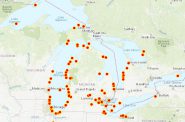 Dec 3rd, 2019 by Tasia Bass Cont
Dec 3rd, 2019 by Tasia Bass Cont
-
Coal Ash Pollutes Midwest States
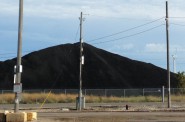 Jun 5th, 2019 by Andrew Blok
Jun 5th, 2019 by Andrew Blok
-
Extreme Changes Forecast for Great Lakes
 May 21st, 2019 by Cassidy Hough
May 21st, 2019 by Cassidy Hough

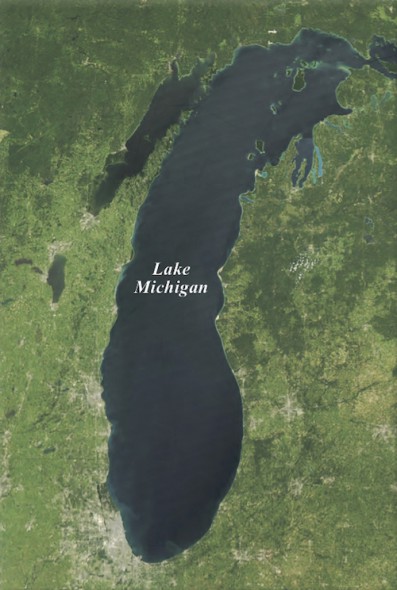
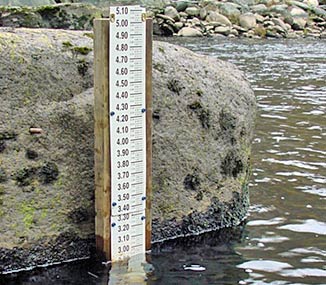
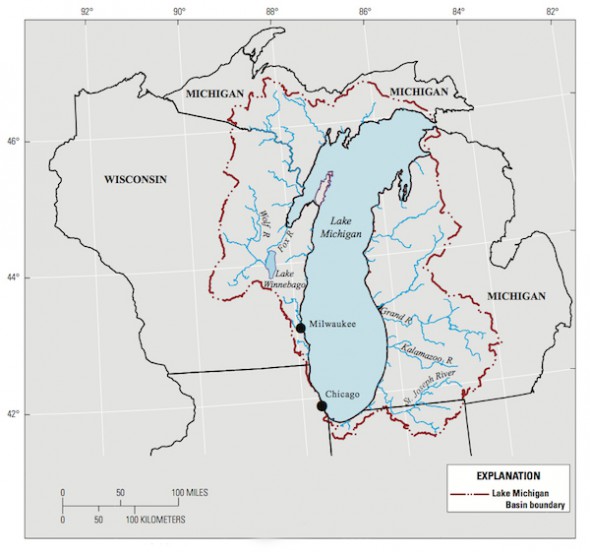



















All these articles make this sound so terrible. Drama queens!
I am certain that any affect humans have had on the climate is simply to accelerate what was already happening and probably not by terribly much.
Just roll with it. Maybe this is a good thing. I don’t think there’s any way the conditions in 2099 can be predicted with any serious certainty.
I guess if it obtains funding for these guys that’s what it’s really all about.
Yeah, it’s all a scheme for grant money. We got the message, you can stick your head back in the sand now.
Okay. Goodbye again.
That was an offhand response. But this time I won’t be deterred.
This place purports to be for the city of Milwaukee, but apparently only so far as a particular political viewpoint supports it and that just nauseates me. There is so much more to life than one-sided politics. I don’t even vote anymore. Can’t we have an honest discussion about truth without having rote political stances overwhelming everything?
I question everything, not just what I don’t agree with.
I love Milwaukee and Wisconsin. These are my people, this is my home.
I mean even Republicans and corporations are getting on board and acknowledging that climate change is real and actions need to be taken. It’s not as one-sided as people think.
http://www.nytimes.com/2015/02/01/business/energy-environment/climate-changes-bottom-line.html?_r=0
http://www.nytimes.com/2015/01/31/us/politics/most-americans-support-government-action-on-climate-change-poll-finds.html
OK, mbradleyc, I will act as if truly are open minded. Here are some questions that you might want to ask yourself:
1. Is carbon dioxide a greenhouse gas?
2. Is carbon dioxide a byproduct of the combustion of fossil fuel: particularly oil and coal?
3. Over the last 2 centuries, what has happened to the production and burning of fossil fuel on this planet?
4. Is the earth getting warmer?
5. Do you have another habitable planet in your back pocket?
Chris, your list of points are very different than asserting temps will be 8 degrees higher in 2099.
The debate isn’t about is CO2 a greenhouse gas. Everyone know it is, just as everyone know plant life needs CO2 for green growth.
What’s debated and unknown is how much of an impact man’s CO2 is having on the environment. Both positive and negative impacts.
It’s becoming more clear by the day climate change is real and man’s impact appears increasingly limited. Arguably to the point of bring immeasurable.
I dare anyone to deny CO2 isn’t positive for plant life.
That’s basically the opposite position of left wing global warming fanatics. Make a point that is true but disconnected from the big picture.